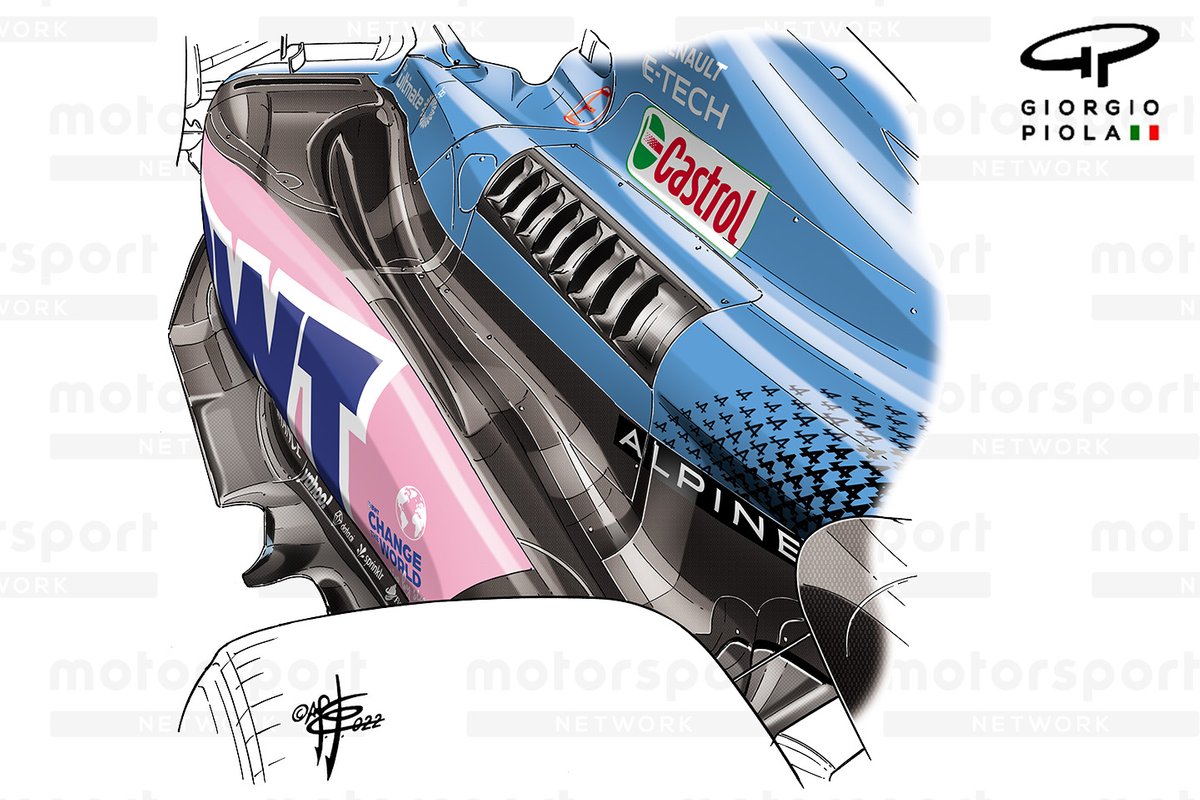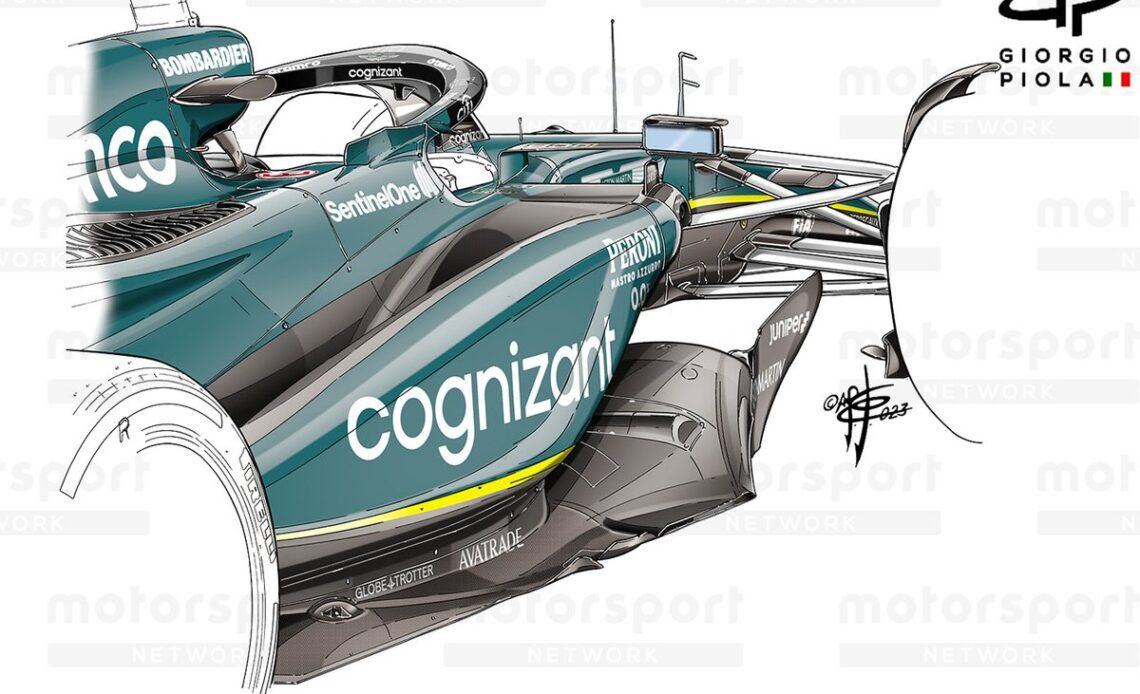Indeed, even F1’s pacesetting team itself joined in the fun when its motorsport director Helmut Marko joked earlier this year that it has been nice to see ‘three Red Bulls’ on the podium.
While such comments are easy to make, and have certainly been fuelled by the team’s technical director Dan Fallows having previously worked at Red Bull, the reality of the Aston Martin AMR23 shows it is far from a clone.
Yes, ‘Team Silverstone’ has produced copied car ideas in the past – most notably with the ‘Pink Mercedes’ as Racing Point that won a race in 2020 – but its current challenger is not one of those.
Sure, the Aston Martin 2022 challenger did eventually gravitate towards the design concepts seen on the Red Bull RB18, after the squad abandoned its launch idea.
However, for this season, it has evolved heavily and added to its foundations to deliver a different development route.
One important thing to remember is that F1’s current regulations are quite restrictive and only allow for a certain amount of design freedom anyway. This of course results in all of the cars having very similar overall design layouts as a whole.
This is also why our attention is drawn to the big-ticket items, such as the sidepods and engine cover, as these are areas that now have the most design freedom.
But let’s take a look at the details to see just how the AMR23 is different to the Red Bull car.
In terms of sidepod design, Red Bull’s own RB19 is almost identical to its predecessor.
However, Aston Martin heavily evolved its concept this year and went down a path that was first adopted by Alpine with its A522, with a channel running along the length of the sidepod.

The AMR23’s ‘slidepod’ design is much more aggressive than Alpine’s though, with the slope dug much deeper into the bodywork in order to define the airflow’s passage toward the rear of the car.
And, whilst other teams might also look to venture down this branch on the development tree, their designs will inevitably create their own offshoot.
This is also a given because each team will have to make adaptations to suit the packaging of the power unit and its ancillaries, whilst also trying to reap the aerodynamic gains on offer.
Luckily, should any of other team want to investigate the concept’s merits, it can do so knowing that the bodywork on the AMR23 isn’t shrink-wrapped to the internal components in the same way that it would have been under the previous…
Click Here to Read the Full Original Article at Motorsport.com – Formula 1 – Stories…

